Interference hunting in TDD networks
Trace minimum hold function with the R&S®MNT100, R&S®PR200, R&S®PR100 and R&S®DDF007

Trace minimum hold function with the R&S®MNT100, R&S®PR200, R&S®PR100 and R&S®DDF007


In time division duplex (TDD) networks, the downlink (DL) and uplink (UL) use the same frequency band in different timeslots. When viewing such TDD signals on a conventional spectrum display, it is impossible to differentiate the two as well as any other unwanted signals present in the same spectrum. This makes interference hunting extremely difficult.
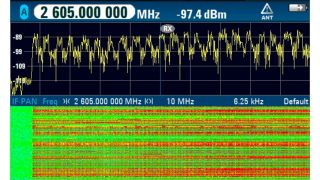
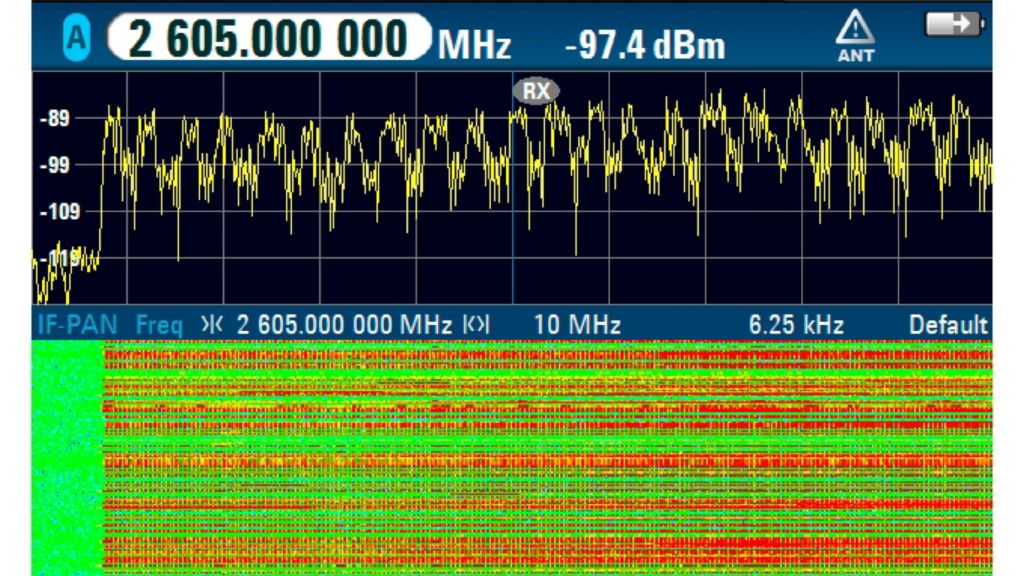
10 MHz realtime spectrum and waterfall display of partial TDD-LTE signal with a relatively persistent interferer at 2602 MHz.
The R&S®PR200 portable monitoring receiver, the R&S®PR100 portable receiver, the R&S®MNT100 RF interference locator and the R&S®DDF007 portable direction finder provide a trace minimum hold function with adaptive detector that enables users to effectively suppress TDD signals and show persistent interferers on the spectrum display. This method provides better visualization of persistent interferers on the spectrum and waterfall display. It is particularly useful for detecting and tracking a constant interferer that is continuously present in the air. When using the trace minimum hold method to home in on the interferer, it is recommended to sweep the handheld directional antenna slowly to allow sufficient time for updating the signal level on the display.
In FFM mode, tune the center frequency to TDD frequency and set trace mode to minimum hold.
Press [DISP] button followed by [F2] Range, scroll to “IF-PAN Display Mode” (see blue frame) and select “Min Hold“.
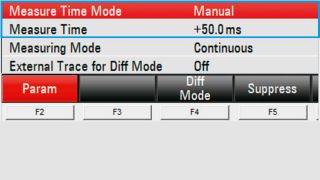
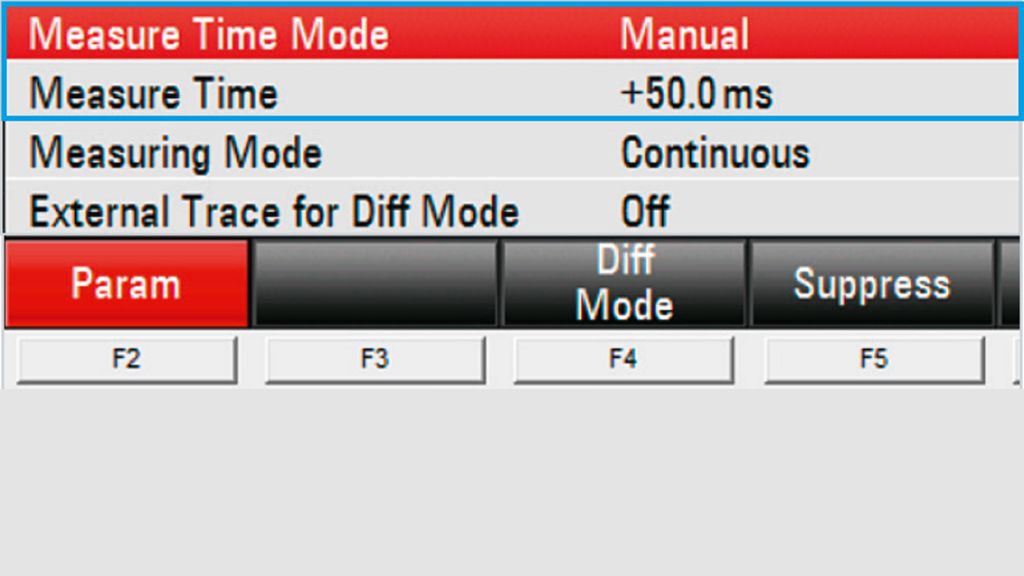
To set the measurement time, press [SCAN] button followed by [F2] Param and set “Measure Time Mode” to “Manual” (see blue frame). Set “Measure Time” so that it provides sufficient suppression of the TDD signals as well as fast tracking of the interferer level, i.e. recommended setting = 50 ms.
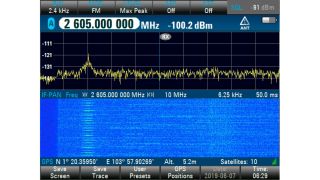
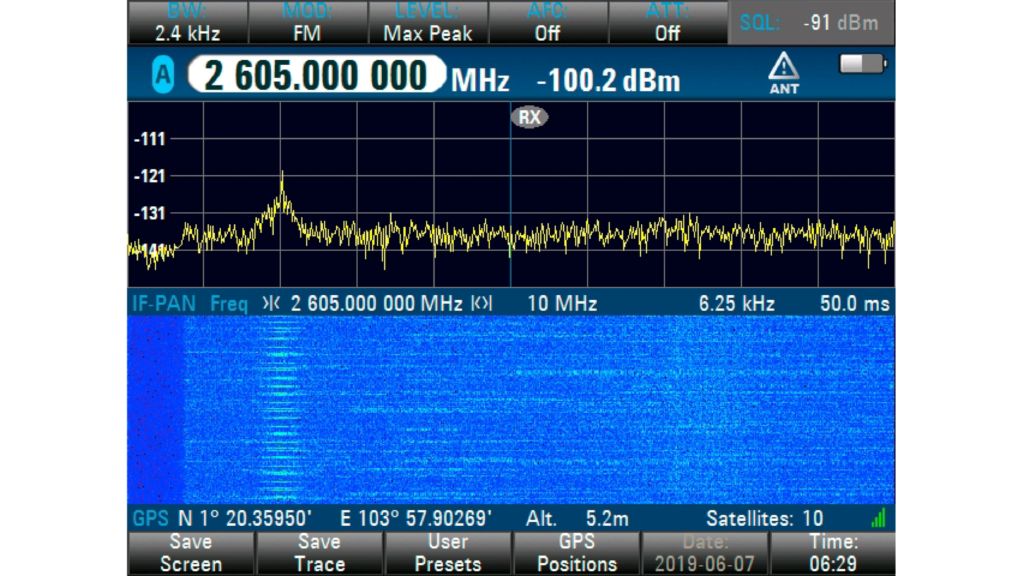
FFM mode (10 MHz). With the trace minimum hold function enabled and the measurement time set to 50 ms, both downlink and uplink TDD signals are suppressed and the relatively persistent interferer at 2602 MHz can be easily identified.
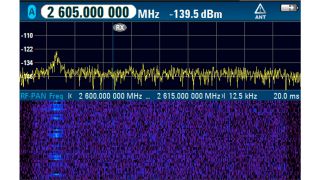
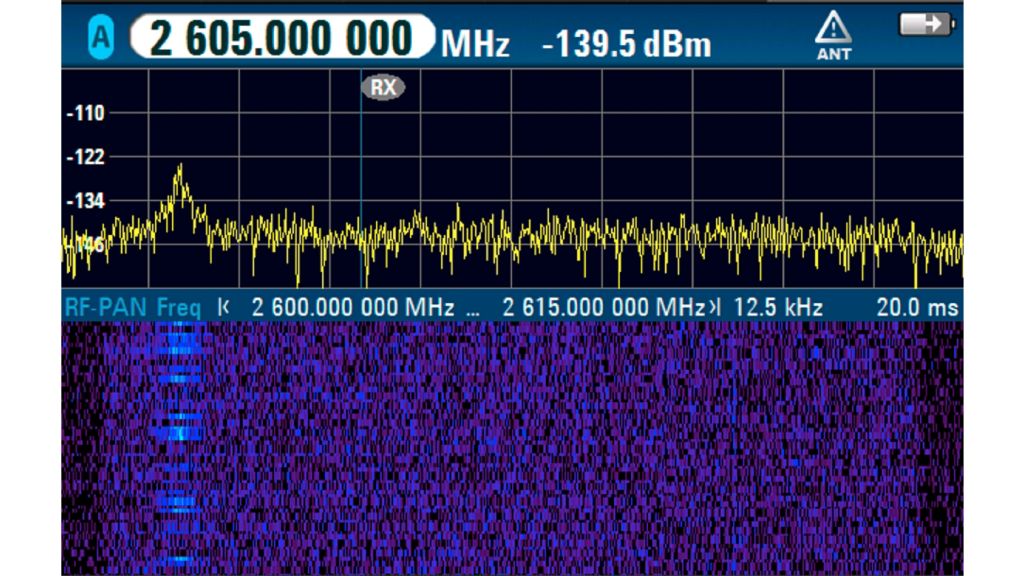
PSCAN mode showing entire TDD-LTE band (2600 MHz to 2615 MHz). With the trace minimum hold in PSCAN mode, it is also possible to suppress both DL and UL TDD signals and make the interferer at 2602 MHz visible in the spectrum.
The theory behind the trace minimum hold function
The trace minimum hold function makes use of a negative FFT detector to determine the trace level. By changing the measurement time, i.e. charging constant of the detector, it is possible to make the detector output level adapt to the interferer behavior.
Left side: With TDD signal time much shorter than the detector measurement time, the detector does not have sufficient time to charge up to the signal peak and therefore appear as a low level in the minimum hold trace.
Right side: On the other hand, an interferer with relatively long duration allows the detector to charge to signal peak and therefore appear as a high level in the signal trace. Such an interferer will then stand out in the spectrum view.

